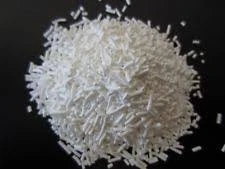
aprotic and protic solvents
Understanding Aprotics and Protic Solvents Their Role in Chemistry
Solvents are integral to a variety of chemical processes, and they can be broadly categorized into two primary types protic and aprotic solvents. The distinction between these two categories is fundamental for chemists, as it influences reaction mechanisms, solubility, and the behavior of solutes in solution.
Protic Solvents
Protic solvents are characterized by the presence of hydrogen atoms that are bonded to electronegative atoms, most commonly oxygen or nitrogen. A typical feature of protic solvents is their ability to donate protons (H+) in a chemical reaction, which fundamentally alters the dynamics of reactions that occur in these media. Water, alcohols (like methanol and ethanol), and carboxylic acids are common examples of protic solvents.
One of the major advantages of protic solvents is their ability to stabilize ions through hydrogen bonding. For example, in aqueous solutions, water can effectively solvate both cations and anions. This property is crucial for reactions such as acid-base reactions, where the solvent's ability to donate protons or solvate protons influences the reaction kinetics and thermodynamics. In addition, the high dielectric constant of protic solvents often leads to reduced ion pairing in solution, making it easier for reactions to occur.
However, the presence of protons can also complicate reactions, particularly for nucleophilic substitutions. When a nucleophile is present in a protic solvent, the solvent molecules can form strong hydrogen bonds with the nucleophile, effectively reducing its reactive ability. This leads to what is known as solvation effects, which can make certain reactions less favorable in protic environments.
aprotic and protic solvents

Aprotics Solvents
In contrast, aprotic solvents lack hydrogen atoms bonded to electronegative atoms and cannot donate protons. Common examples of aprotic solvents include acetone, dimethyl sulfoxide (DMSO), and N,N-dimethylformamide (DMF). These solvents either do not possess acidic protons or have very weak acidic properties, allowing them to remain neutral amid reactions.
The key feature of aprotic solvents is their ability to solvate cations while having minimal interaction with anions. This solvation capability enhances the reactivity of nucleophiles since they are less hindered by solvation compared to when they are in protic solvents. For instance, in nucleophilic substitution reactions (such as the S_N2 mechanism), the use of aprotic solvents often facilitates a faster reaction rate. This is particularly advantageous when working with strong nucleophiles, as their intrinsic reactivity is preserved.
Moreover, aprotic solvents usually have higher boiling points and lower vapor pressures compared to protic solvents, which can be advantageous in high-temperature reactions. Their chemical stability and ability to dissolve a wide range of organic and inorganic compounds further underscore their utility in various synthetic applications.
Conclusion
In summary, the choice between aprotic and protic solvents can significantly influence the outcome of a chemical reaction. Protic solvents excel in situations where stabilization of charged species is vital, while aprotic solvents are generally preferred for reactions involving strong nucleophiles and when solvation effects can impede reaction rates. Understanding the distinct properties and behaviors of these solvents allows chemists to optimize reaction conditions and achieve desired results in organic synthesis and various industrial applications. As research in chemistry continues to advance, the role of these solvents will remain a pivotal aspect of scientific inquiry and practical application.
-
Why Glacial Acetic Acid Food Grade Is Essential in FlavorNewsMay.26,2025
-
Surging Export Growth of Food Additives in ChinaNewsMay.26,2025
-
How Ammonium Nitrate Fertilizer Boosts Crop YieldsNewsMay.26,2025
-
How 1,2,3-Benzotriazole Shields Plastics from UV DegradationNewsMay.26,2025
-
Cyanide in Gold Mining: Protecting People and the PlanetNewsMay.26,2025
-
Aluminum Hydroxide in Modern Sunscreen FormulationsNewsMay.26,2025
-
Understanding Synthetic Rubber OptionsNewsApr.27,2025
Hebei Tenger Chemical Technology Co., Ltd. focuses on the chemical industry and is committed to the export service of chemical raw materials.
-

view more DiethanolisopropanolamineIn the ever-growing field of chemical solutions, diethanolisopropanolamine (DEIPA) stands out as a versatile and important compound. Due to its unique chemical structure and properties, DEIPA is of interest to various industries including construction, personal care, and agriculture. -

view more TriisopropanolamineTriisopropanolamine (TIPA) alkanol amine substance, is a kind of alcohol amine compound with amino and alcohol hydroxyl, and because of its molecules contains both amino and hydroxyl. -

view more Tetramethyl Thiuram DisulfideTetramethyl thiuram disulfide, also known as TMTD, is a white to light-yellow powder with a distinct sulfur-like odor. It is soluble in organic solvents such as benzene, acetone, and ethyl acetate, making it highly versatile for use in different formulations. TMTD is known for its excellent vulcanization acceleration properties, which makes it a key ingredient in the production of rubber products. Additionally, it acts as an effective fungicide and bactericide, making it valuable in agricultural applications. Its high purity and stability ensure consistent performance, making it a preferred choice for manufacturers across various industries.











